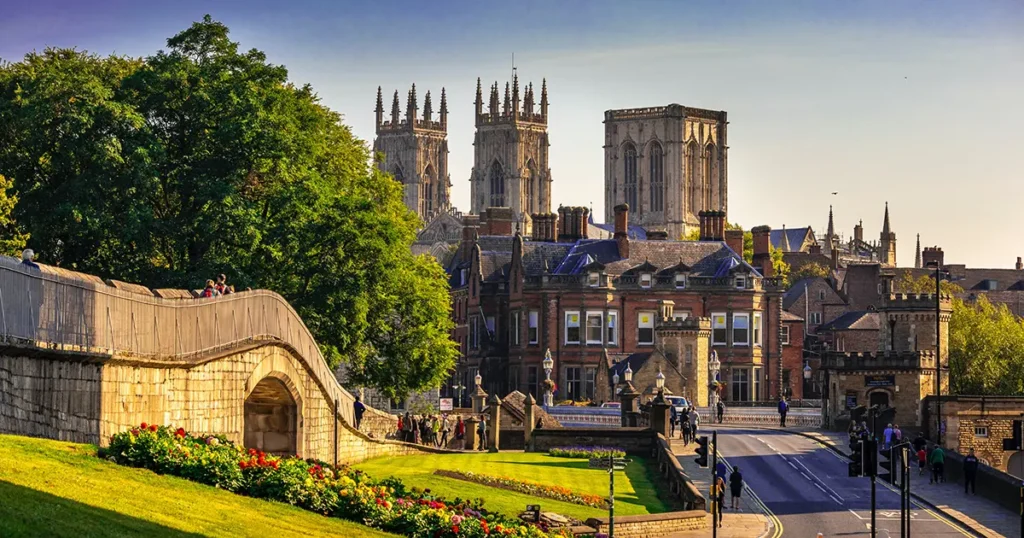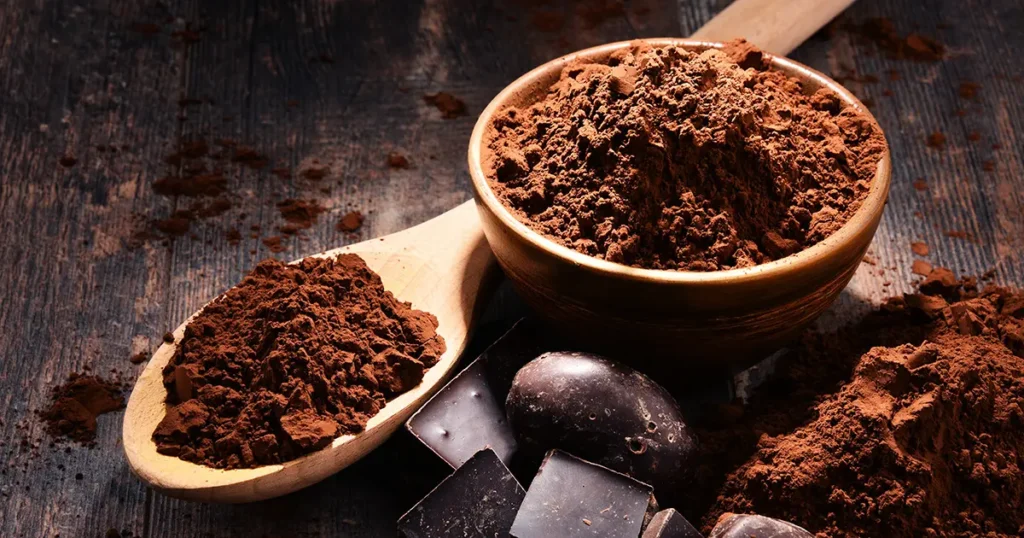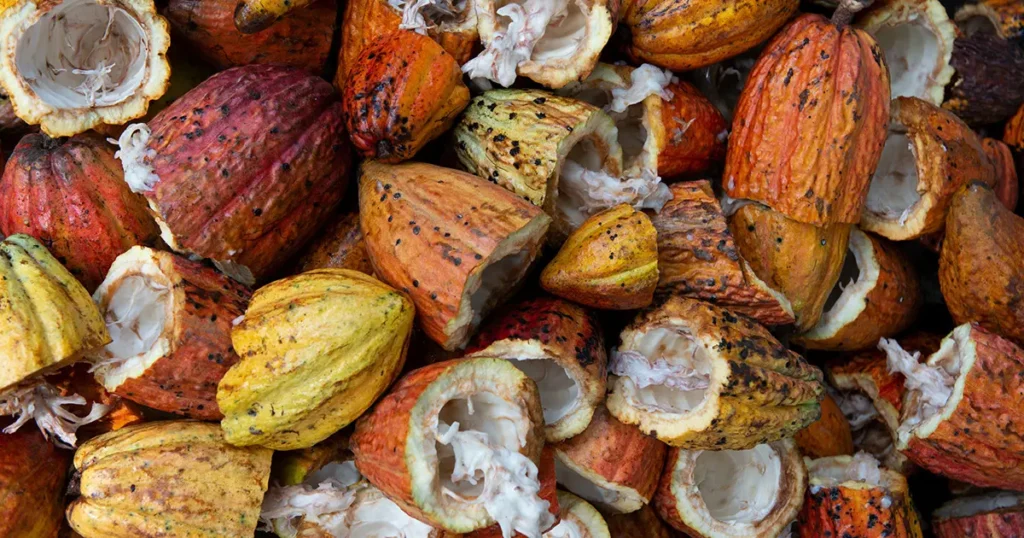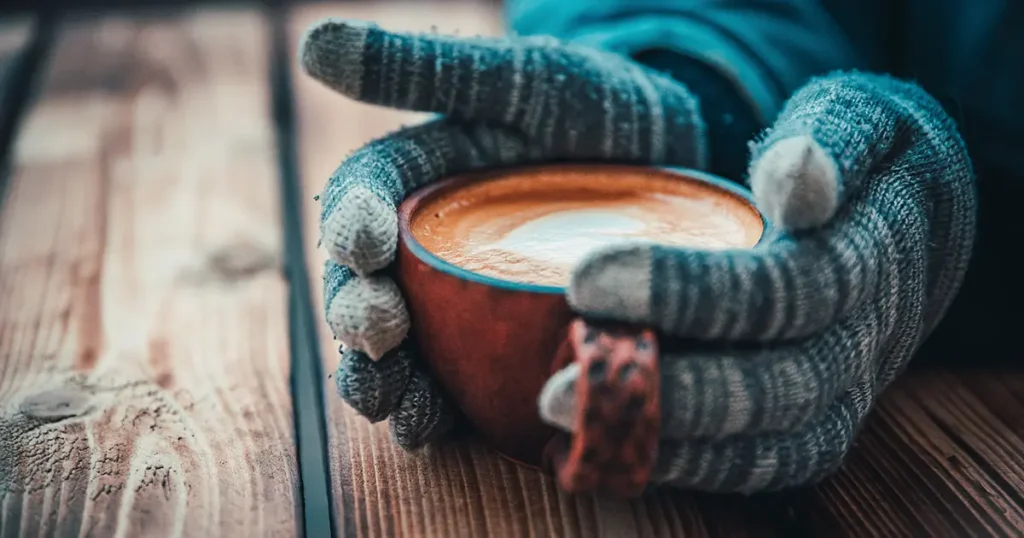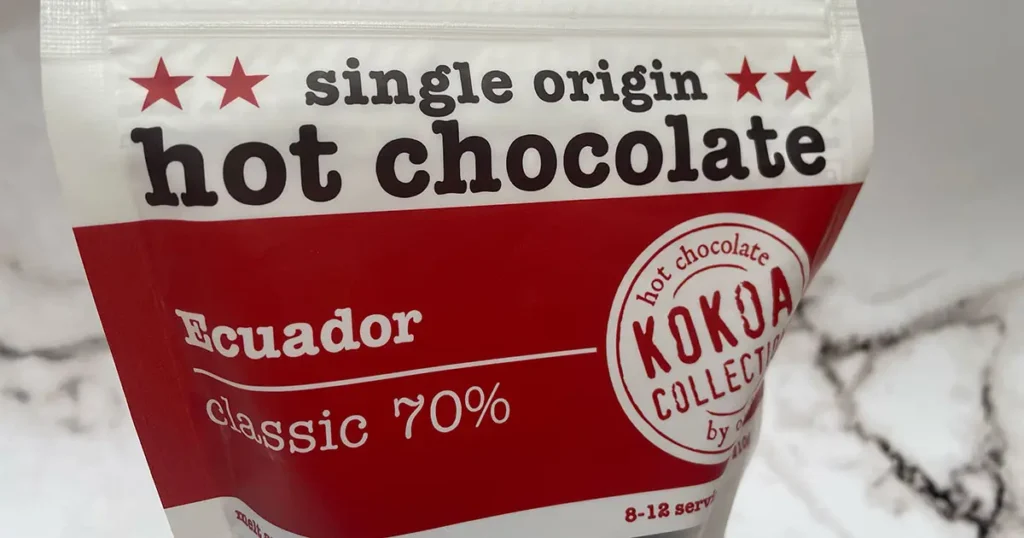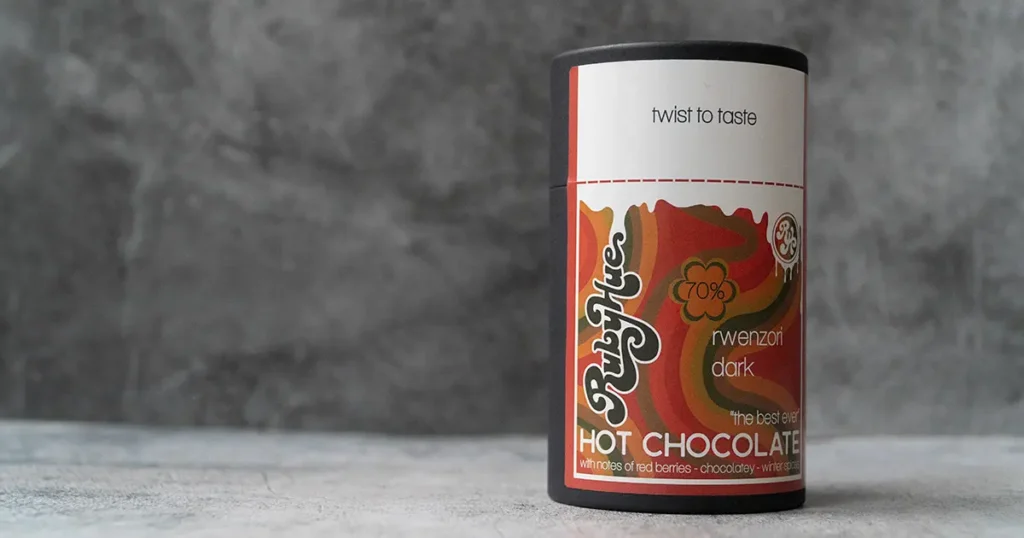Ever pondered the journey of the chocolate bar in your hand? From ancient Mesoamerican rituals to modern gourmet experiences, chocolate’s story is as rich and diverse as its flavours. Join us as we unwrap the delectable history of the world’s most cherished treat.
Introduction
Chocolate has not only been a delightful treat but also a cultural staple for various societies.
Its rich, nuanced history, beginning in the depths of ancient civilizations and meandering through modern cafes, has influenced numerous cultures.
There’s an indefinable allure to chocolate that transcends borders and eras.
The Origins of Chocolate: Ancient Mesoamerica
Cacao Trees and the Rainforests: Deep within the dense canopies of Mesoamerican rainforests, the cacao tree first spread its roots.
This tree’s unassuming beans would eventually birth chocolate, changing gastronomy forever.
These beans, embedded within the cacao fruit, would go through elaborate rituals before reaching our cups and plates.
The Mayan Connection: The Mayans not only consumed chocolate but elevated it to a divine status.
Cacao beans were a significant part of their culture, often used as currency and served as a frothy, spicy drink during significant events.
Revered in their spiritual rituals, these beans were believed to be gifts from their gods.
The Aztec Touch
Discovering Xocolatl: For the Aztecs, chocolate was not merely a delicacy; it was a way of life.
They brewed ‘xocolatl’, a spicy concoction made by mixing cacao beans with chillies and herbs.
Unlike the sweet beverage we know today, xocolatl was a bitter, frothy mix, often reserved for the elite.
Chocolate in Rituals: In the heart of Tenochtitlán, the grand Aztec capital, chocolate found its place in both religion and royalty. Warriors consumed it for vitality, while priests offered it to the gods.
Emperors, like Montezuma II, reportedly drank several cups daily, believing in its aphrodisiac properties.
European Exploration and Chocolate’s Journey Westward
The New World’s Gift to the Old: When explorers like Hernán Cortés landed on the American shores, they were intrigued by the native beverages, especially the frothy ‘xocolatl’.
Bringing it back to Europe, the exotic drink was met with initial hesitation, only to be wholeheartedly embraced later.
Europe’s Adaptations: The naturally bitter drink underwent a European transformation.
The Old World’s introduction of sugar, cinnamon, and vanilla to the mix led to a beverage that was smoother and more in line with European tastes, setting the stage for the hot chocolate we know today.
Spain’s Chocolate Transformation
Sweetening the Deal: In the Spanish court, ‘xocolatl’ underwent another metamorphosis.
The Spaniards began sweetening the bitter brew with cane sugar, transforming its taste profile dramatically.
Hot Chocolate’s Dawn: While the chilly European climate was vastly different from Mesoamerica, the warm embrace of a newly refined hot chocolate became an integral part of Spanish culture.
In the chilly mornings of Seville and Madrid, hot chocolate started its journey as the beverage of choice, warming souls and inspiring conversations.
European Spread: From Paris to London
Elegance in France: From Spain, the chocolate fervour moved to France.
Parisian salons and cafes became hotspots for chocolate lovers. While initially a preserve of the aristocracy, it eventually made its way to French households, symbolising luxury and fine taste.
England’s Elite Obsession: Across the Channel, England’s tryst with chocolate began as an elite indulgence.
Chocolate houses, precursors to coffee shops, popped up in London, serving as gathering spots for intellectuals and aristocrats.
Over time, the English added milk, giving birth to a creamier version of the drink.
Revolutionary Chocolate: Industry’s Role
Solid Bars Make An Entry: The 19th century’s Industrial Revolution wasn’t just about steam and machinery.
Innovations in chocolate manufacturing, especially the invention of the chocolate press, made it possible to separate cacao butter from roasted beans, leading to the creation of solid chocolate bars.
Brands Emerge: With the advent of mass production techniques, the likes of Cadbury in England and Nestlé in Switzerland began crafting chocolates.
These weren’t just products; they were brands that promised quality and consistency, forever altering our relationship with this treat.
Switzerland: Perfecting the Art
Milky Goodness: The Swiss, never to be outdone in the world of chocolates, added condensed milk to the mix, creating the world’s first milk chocolate.
This creamy, velvety variant became an instant hit, and Swiss chocolates soon became synonymous with luxury.
A Matter of Texture: Then came the conching process, introduced by Rodolphe Lindt, refining chocolate’s texture to a silky smoothness, further solidifying Switzerland’s position as a chocolate powerhouse.
America’s Chocolate Chapter
Production Pioneers: On the American shores, entrepreneurs like Milton Hershey embarked on their chocolate journeys.
Establishing large factories, they started producing chocolate en masse, ensuring that every American could afford this delightful treat.
Birth of the Candy Bar: The 20th century saw a boom in creativity.
Chocolate met peanuts, caramel, and nougat, leading to the invention of the modern candy bar.
Brands like Hershey’s and Mars introduced bars that would become classics, relished by generations.
Chocolate in War and Crisis
Chocolate on the Battlefield: During both World Wars, chocolate played an unexpected role.
Troops were provided with specially-formulated chocolate bars as a part of their rations.
They weren’t just a source of sustenance but also a morale booster, providing soldiers a small taste of comfort amidst the chaos.
Lifting Spirits in Tough Times: Beyond the battlefields, during economic downturns and crises, chocolate remained a beacon of comfort for many.
As a relatively affordable luxury, it offered solace to people during the Great Depression and other challenging periods, reinforcing its emotional significance.
Modern Chocolate Production: Ethical Concerns
The Dark Side of Chocolate: Sadly, the chocolate industry has shadows.
Issues like child labour and worker exploitation have tainted the supply chains, especially in West Africa, which supplies a significant portion of the world’s cacao.
Towards Ethical Consumption: The outcry against these practices has led to a push for fair trade chocolate.
Many brands now ensure that farmers receive fair compensation and that their chocolates are produced without exploiting workers, providing consumers with ethically-produced alternatives.
Chocolate and Health: A Double-edged Sword?
Bitter is Better: Recent studies have highlighted the health benefits of dark chocolate.
Rich in antioxidants, especially flavonoids, moderate consumption of high-quality dark chocolate can have cardiovascular benefits and even improve mood.
Too Much of a Good Thing: However, it’s essential to consume chocolate in moderation.
Many commercial chocolates are high in sugar and calories, which can lead to weight gain and other health issues if consumed excessively.
Chocolate’s Cultural Footprint
World Chocolate Day and Beyond: Every 7th of July, the world comes together to celebrate World Chocolate Day, acknowledging its rich history and cultural significance.
From art installations to literary odes, chocolate’s influence permeates diverse artistic expressions.
From Screen to Canvas: Be it the magical world of ‘Charlie and the Chocolate Factory’ or the romantic nuances of ‘Chocolat’, chocolate has inspired countless storytellers and filmmakers.
Its rich hues have also graced canvases, making it a muse for artists globally.
The Art and Craft of Chocolate Making
From Bean to Bar: Chocolate’s journey is intricate.
Starting as beans in cacao pods, they undergo fermentation, drying, roasting, and several more processes before morphing into the chocolates we adore.
Each stage demands precision, ensuring the final product’s taste and quality.
Craftsmanship vs Mass Production: While big brands churn out tonnes of chocolates daily, a new wave of craft chocolatiers is rising.
These artisans, often working in small batches, emphasise purity, unique flavour profiles, and ethical sourcing, offering a gourmet experience to aficionados.
Globetrotting for Chocolate
Festive Chocolate: From the streets of Brussels to the alleys of Oaxaca, chocolate festivals celebrate this divine delicacy.
These events not only showcase local flavours and innovations but also often feature workshops, teaching enthusiasts about chocolate-making.
Journeying through Cacao Farms: For the true chocolate lover, a visit to a cacao farm is a pilgrimage.
Be it the lush plantations of Ivory Coast or the organic farms of Ecuador, these tours offer a hands-on experience, right from plucking cacao pods to tasting the freshest chocolates.
Tomorrow’s Chocolate: What Lies Ahead
Flavour Frontiers: As consumers become more adventurous, chocolatiers are experimenting with unique ingredients, from sea salt and chilli to more exotic additions like lavender and gold leaf.
Sustainability is Key: With increasing awareness about the environment and ethical sourcing, the chocolate industry is undergoing a green revolution.
From sustainable farming practices to eco-friendly packaging, the future of chocolate looks not just delicious but also responsible.
Chocolate: A Symphony of Flavours
Wine and Chocolate: When paired right, wine and chocolate can create a gastronomic symphony.
Dark chocolates complement red wines like Merlot, while milk chocolates go well with sweeter wines.
Beyond the Vine: But it’s not just wine.
Be it the smokiness of a fine whiskey or the crispness of craft beer, various beverages can enhance chocolate’s taste, creating a multi-layered tasting experience.
Chocolate: Preserving the Delicacy
Storing Secrets: Temperature and humidity can significantly impact chocolate’s taste and texture.
Ideally, it should be stored in a cool, dry place, away from strong odours.
The Allure of Rare Chocolates: Like fine wine, certain chocolates, often limited editions by renowned chocolatiers, become collectors’ items.
Their value can appreciate over time, making them not just a treat for the palate but also an investment.
Emotions, Memories, and Chocolate
Moments of Love and Celebration: Be it Valentine’s Day chocolates or birthday treats, chocolate is often the go-to gift to express love and celebrate milestones.
Its rich, melting texture seems to mirror our warmest emotions.
A Universal Comfort: Bad day at work? Heartbreak? For many, the solution is a bar of chocolate.
Its comfort is universal, transcending age, culture, and geography.
Summary
Chocolate isn’t just a sweet treat; it’s a journey through time and cultures.
From ancient Mesoamerican rituals to modern-day gourmet experiences, it has delighted, comforted, and inspired generations, making it a timeless wonder.
History of Chocolate FAQs
When and where did chocolate originate?
Chocolate traces its origins to ancient Mesoamerica, with both the Mayans and Aztecs having their unique brews.
How did chocolate evolve when it reached Europe?
European chocolatiers added sugar, milk, and spices, transforming it from a bitter drink to the sweet delicacy we know today.
Are there health benefits to consuming chocolate?
Yes, dark chocolate, in moderation, is known to have cardiovascular benefits due to its antioxidants. However, moderation is crucial.
What’s the difference between craft chocolate and mass-produced variants?
Craft chocolatiers focus on small batches, unique flavours, and often ethical sourcing, while mass producers emphasise scalability and consistency.
Why is chocolate often associated with emotions and memories?
Chocolate has been a part of many personal and cultural celebrations, making it intertwined with emotions and memories for many.

